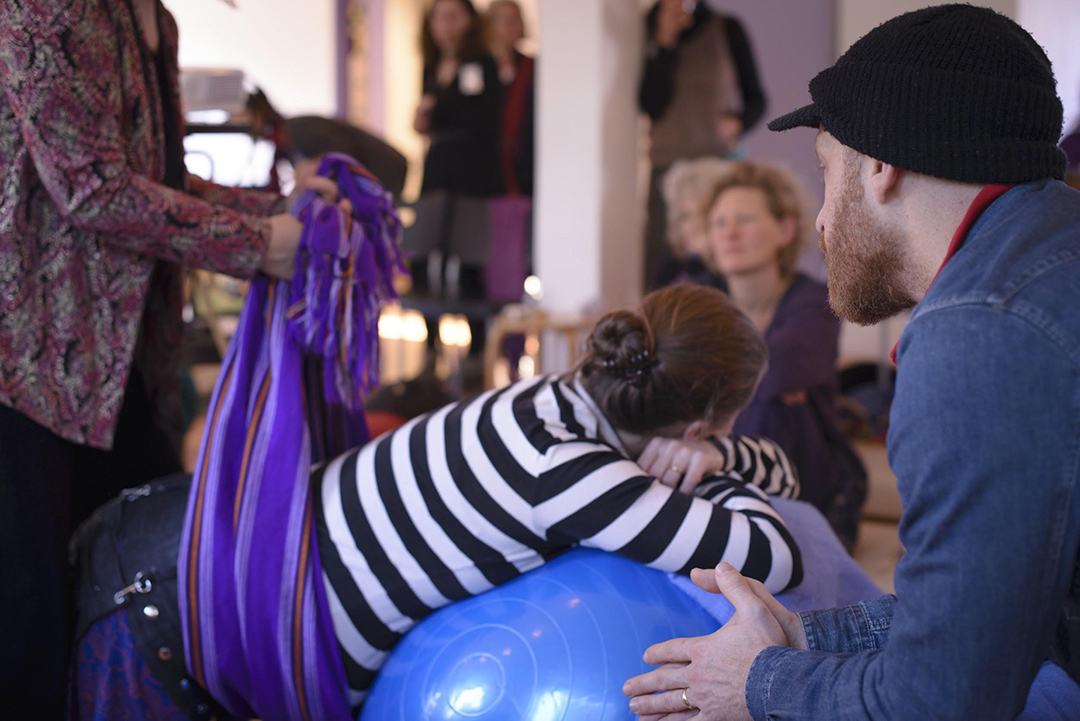
Fear of childbirth pain can be an inhibitor to experiencing one’s own body in the process, even if there is curiosity about the experience of childbirth. We’ve talked before, on the blog, about the fear of pain being a reason birth givers may not explore choices in natural birth.
The perception of pain can add or reduce coping with the senses involved with labor. Two types of labor pain are pressure and stretch. The dull, visceral pain of dilation of the cervix and lower uterus is felt in the lower abdomen, sacrum, and back. The sharp, somatic pain from stretching and distension of the pelvic floor and perineum comes late in labor and lower in the spine and pelvis.
Perception is important because labor pain is part of the unknown of labor and, therefore, how we view the unknown is combined with the fear of pain. Will it hurt? How much will it hurt? In addition to the actual physical pain of labor – emotion and meaning of pain mix with fear of the unknown, a sense of purpose for the pain (opening to birth rather than sickness or injury), entitlement to being pain-free, and whether one feels a sense of control or not. Compare that to a curiosity of how birth might feel, how meeting labor with the breath and the body, how one might respond and be ready to greet a child at the completion of the process. In that openness of spirit, the opening of the body may be more of an intimacy than an intimidation.
“[Stressful] feelings can lead to a state that is worse than the pain itself,” says Clinical Nurse Specialist Tara Nichols. Feelings of powerlessness, isolation, and vulnerability can inhibit a positive or self-empowering interpretation or modulation of the pain. Providers, doulas and other birth helpers support a positive modulation by restoring trust with the gift of presence.
The doula offers continual presence through the labor, but this presence can be held by the entire birth team when they are able to be in the room. And presence isn’t only of the body, but letting the birthing person be seen and heard. Empathy in the birthing room translates to safety because the members of the birth team are aware of the birth process and assessing the wellbeing of birth giver and baby. Being heard and voicing choice are ways the birthing person feels included in the social and birth management (care) on their behalf.

The Spinning Babies® approach uses techniques of stretching and jiggling the fascia and muscles for labor comfort and the reduction of both visceral and somatic types of labor pain (and the enhancement of labor progress). Sensors in the fascia and nervous system perceive a slow, sustained stretch and a vibration-like jiggle. We see sustained stretch in the Sidelying Release, Walcher’s (the psoas, though Walcher’s is known for a birth position that opens the inlet). We use the jiggle in the Rebozo Manteada in the abdomen or over the hips, Shake the Apples, and The Bum Jiggle.
Spinning Babies® can be a parent’s invitation to explore a natural birth. Invite their confidence with both the jiggle and stretch in appropriate ways for their gestation and personal situation. The Three Sisters of Balance and the Daily Essentials are an approach for comfort now and ease later.
The portion on feelings and pain was Inspired by the work of Tara Nichols, Clinical Nurse Specialist, in her Appendix A to Advancing Relationship-based Cultures, which is called, See Me as a Person Therapeutic Practices; Core Competencies Applied to Pain and Comfort Care.
[tribe_events_list limit=”4″]
One of our most beloved products, now with subtitles in English, French, and Spanish, offering expert support to reduce intervention and increase comfort throughout pregnancy and birth.